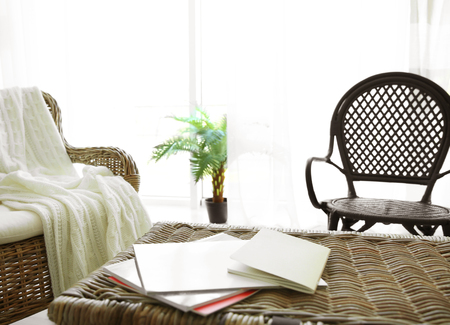Introduction to Feng Shui in American Master Bedrooms
Feng Shui is an ancient Chinese practice that focuses on creating harmony and balance within your living spaces. In the United States, more homeowners are embracing Feng Shui principles, especially when it comes to designing master bedrooms. But what does this mean for the modern American home? It’s about blending time-tested traditions with contemporary lifestyles, making sure your master bedroom feels both peaceful and practical.
Why Is Feng Shui Important for Master Bedrooms?
The master bedroom isn’t just a place to sleep—it’s your personal sanctuary. Good Feng Shui in this space can help you relax, recharge, and even improve relationships. By following Feng Shui guidelines, you can make your bedroom more inviting and supportive of your well-being.
Key Principles of Feng Shui for Master Bedrooms
| Feng Shui Principle | What It Means in the U.S. | How to Apply |
|---|---|---|
| Balance & Harmony | Create a calm atmosphere that fits your lifestyle | Choose soft colors, comfortable bedding, and balanced decor |
| Bed Placement | The bed should be in a commanding position but practical for U.S. room layouts | Place the bed where you can see the door but not directly in line with it |
| No Clutter | Keep spaces tidy, especially under the bed and on nightstands | Use storage solutions popular in American homes like bins or under-bed drawers |
| Natural Light & Airflow | Maximize daylight and fresh air while maintaining privacy | Use sheer curtains, open windows regularly, or add plants for better air quality |
| Personal Touches | Blend traditional Feng Shui with items that reflect your personality | Add family photos, favorite art pieces, or meaningful decor—just keep it balanced |
Blending Tradition with Modern American Living
You don’t have to follow every rule exactly as they’re written in traditional Feng Shui texts. The key is to adapt these ideas so they work for your unique space and lifestyle. For example, open floor plans are common in the U.S., so you might need creative solutions to create a sense of separation and coziness in your master bedroom. Think about how you use your space every day and find ways to bring comfort and tranquility into the room.
2. Ideal Bedroom Layouts and Bed Placement
Recommended Bed Positions
When it comes to Feng Shui for master bedrooms in the U.S., where you place your bed makes a big difference. The best spot for your bed is called the “command position.” This means your bed should be placed so that when youre lying down, you can see the bedroom door without being directly in line with it. Usually, this means putting the bed against a solid wall, diagonally across from the door.
Typical Dos and Donts for Bed Placement
| Dos | Donts |
|---|---|
| Place the head of the bed against a solid wall for support. | Avoid positioning the bed under a window, which may cause poor sleep or lack of support. |
| Ensure you have a clear view of the door from your bed (not directly in line). | Dont put the bed directly facing the door (“coffin position” in Feng Shui). |
| Leave space on both sides of the bed for balance and easy access. | Avoid pushing one side of the bed up against the wall unless space is tight. |
Common Pitfalls to Avoid
- Beds Under Windows: Many American bedrooms feature windows behind where beds are commonly placed. In Feng Shui, this can disrupt energy and lead to restless sleep. If you cant avoid this setup, use thick curtains or shades to create a sense of stability.
- Beds Facing Doors Directly: Its common in U.S. homes to see beds aligned straight with doors due to room shapes. Try to shift your bed slightly off-center so its not directly in line with the doorway.
- Lack of Symmetry: In American bedrooms, nightstands on both sides of the bed help create balance, which is also good Feng Shui practice.
How These Tips Fit American Bedroom Architecture
Master bedrooms in the U.S. often have large windows, built-in closets, and sometimes awkward door placements. While it might not always be possible to achieve “perfect” Feng Shui, focusing on these guidelines will help create a peaceful and supportive space within most American home layouts. Even small adjustments—like moving your bed a few inches or adding sturdy headboards—can make a noticeable difference in comfort and energy flow.

3. Choosing Colors and Decor for Positive Energy
When creating a master bedroom that feels peaceful and inviting, both Feng Shui principles and modern American style can work hand-in-hand. The right combination of colors, wall art, and décor helps attract positive energy, support restful sleep, and foster closeness between partners.
Calming Color Choices
Soft, soothing shades are key for a harmonious bedroom. In Feng Shui, certain colors encourage relaxation and intimacy, while also fitting well with American home design trends. Consider the following:
| Color | Feng Shui Meaning | Modern American Appeal |
|---|---|---|
| Pale Blue | Promotes calmness and tranquility | Popular in coastal or farmhouse-inspired spaces |
| Sage Green | Balances energy, invites healing vibes | Trendy in eco-friendly and minimalist homes |
| Soft Gray | Brings stability and peace | Works with contemporary or transitional decor |
| Warm Beige or Taupe | Adds warmth and comfort | Complements rustic or modern styles |
| Blush Pink or Peach | Encourages romance and tenderness | A subtle accent in boho-chic or glam bedrooms |
Colors to Avoid:
- Bright reds (can be too energizing for sleep)
- Loud neons (distract from relaxation)
- Dark black or deep purples (may feel heavy or somber if overused)
Selecting Wall Art That Inspires Relaxation
The right artwork can boost positive vibes while reflecting your personal taste. Here’s how to choose wall art according to Feng Shui and popular U.S. decor preferences:
- Avoid images of single people or aggressive animals. Instead, opt for pairs—like two birds or abstract art in gentle shapes—which symbolize harmony and partnership.
- Choose landscapes, peaceful water scenes, or soft abstract pieces. These help relax the mind and create a serene mood.
- Avoid sad or chaotic imagery. Steer clear of anything that feels lonely, unsettling, or overly busy.
- Select frames that match your room’s color palette. Wood tones are both grounding (in Feng Shui) and trendy in American interiors.
Décor Tips for Positive Energy and Intimacy
- Bedding: Use quality fabrics in calming shades. Layer textures—like cotton sheets with a velvet throw—for comfort and visual interest.
- Pillows: Place pillows in pairs to reinforce togetherness. Keep clutter minimal for a clean look.
- Lighting: Choose soft, adjustable lighting such as bedside lamps with dimmers. Avoid harsh overhead lights at night.
- Nature Elements: Add small plants (like peace lilies or snake plants) to refresh the air and promote vitality.
- Scent: Lightly scented candles or diffusers with lavender or chamomile enhance relaxation without overwhelming the senses.
- No electronics on display: Keep TVs, laptops, and phones out of sight to maintain a restful atmosphere.
The Takeaway on Bedroom Style
Selecting calming colors, meaningful wall art, and thoughtful décor creates a bedroom that not only meets Feng Shui guidelines but also feels stylish and comfortable by American standards. Focus on simplicity, comfort, and items that make you feel at ease—your master bedroom will become your favorite retreat.
4. Avoiding Clutter and Embracing Simplicity
In Feng Shui, a clean and organized master bedroom is essential for creating a space where energy—or “chi”—can flow freely. Clutter blocks this energy, making it difficult to relax, recharge, and enjoy restful sleep. The principle is simple: a tidy room promotes peace of mind and supports your well-being.
Why a Tidy Bedroom Matters in Feng Shui
According to Feng Shui, every item in your bedroom either adds to or drains your energy. Excess stuff, especially under the bed or on surfaces, can cause stress, anxiety, and even disrupt your sleep. By embracing simplicity and removing unnecessary items, you allow positive energy to circulate and help create a calming sanctuary.
Actionable Decluttering Tips for Americans
Getting rid of clutter doesnt have to be overwhelming. Here are some familiar methods that work well in American homes:
| Method | How It Helps |
|---|---|
| Regular Donations | Set aside time each season to donate clothes, linens, or decor you no longer use. Many local charities or donation centers offer easy drop-off options. |
| Organization Tools | Invest in drawer dividers, closet organizers, or storage bins from popular stores like The Container Store or Target. These tools help keep everything in its place. |
| The “One In, One Out” Rule | For every new item you bring into the bedroom (like bedding or decor), remove an old one. This keeps things from piling up over time. |
| No-Storage Under the Bed | Avoid storing anything under the bed—even if space is tight. If you must use it for storage, keep only soft items like extra bedding. |
| Nightstand Minimalism | Clear off nightstands except for essentials like a lamp or a book. This reduces visual clutter and helps you wind down at night. |
Quick Steps to Start Decluttering Today
- Pick one area—such as your closet or dresser—to tackle first.
- Sort items into “Keep,” “Donate,” and “Throw Away” piles.
- Use baskets or bins for small items like jewelry or accessories.
- Create a regular schedule for tidying up—like 10 minutes before bed each night.
- Celebrate progress! Even small changes can make a big difference in your rooms energy.
The Feng Shui Payoff
A clutter-free master bedroom sets the stage for better sleep, reduced stress, and a more harmonious home environment. With just a few simple habits—and the right tools—you can transform your bedroom into a peaceful retreat that feels good every day.
5. Enhancing Relationships and Well-being
Feng Shui Dos and Donts for Couples in the Master Bedroom
Creating a peaceful and loving environment in your master bedroom isn’t just about décor—it’s about setting the stage for a healthy relationship. Blending Feng Shui principles with American preferences can help couples strengthen their bond while making the space feel inviting and comfortable. Here’s what you should keep in mind:
Balanced Décor for Both Partners
| Dos | Donts |
|---|---|
|
|
Fostering Harmonious Energy
- Symmetry matters: Arrange the room so each person has similar space and storage—this helps promote equal partnership.
- Shared elements: Use bedding and décor that appeal to both tastes. Mixing masculine and feminine touches is totally okay!
- No tech zone: Keep TVs, laptops, and work materials out of the master bedroom when possible—this encourages quality time together.
- Scent and comfort: Add soothing scents like lavender or vanilla with candles or diffusers, which are popular in American bedrooms and align with Feng Shui’s focus on sensory balance.
American Cultural Considerations
- Personal space: While togetherness is key, make sure each partner has a spot for personal belongings—such as a dedicated nightstand drawer or reading nook.
- Decorate together: Collaborate on choosing furniture, paint colors, or textiles. This not only reflects both personalities but also builds teamwork in the relationship.
- Avoid work reminders: In American homes, separating work from rest is important. Store bills, paperwork, and electronics elsewhere to keep stress out of your shared sanctuary.
Your Relationship-Boosting Bedroom Checklist
- Create symmetry—two lamps, two pillows, two nightstands if possible
- Add soft lighting for warmth and romance
- Keep under-bed space clean—no clutter or forgotten storage bins
- Select art and objects that inspire love and partnership
- Avoid mirrors facing the bed—they can disturb restful sleep according to Feng Shui principles
By combining these simple Feng Shui tips with American design sensibilities, you can transform your master bedroom into a nurturing retreat that supports both well-being and a strong relationship for years to come.


